As an Amazon Associate I earn from qualifying purchases.
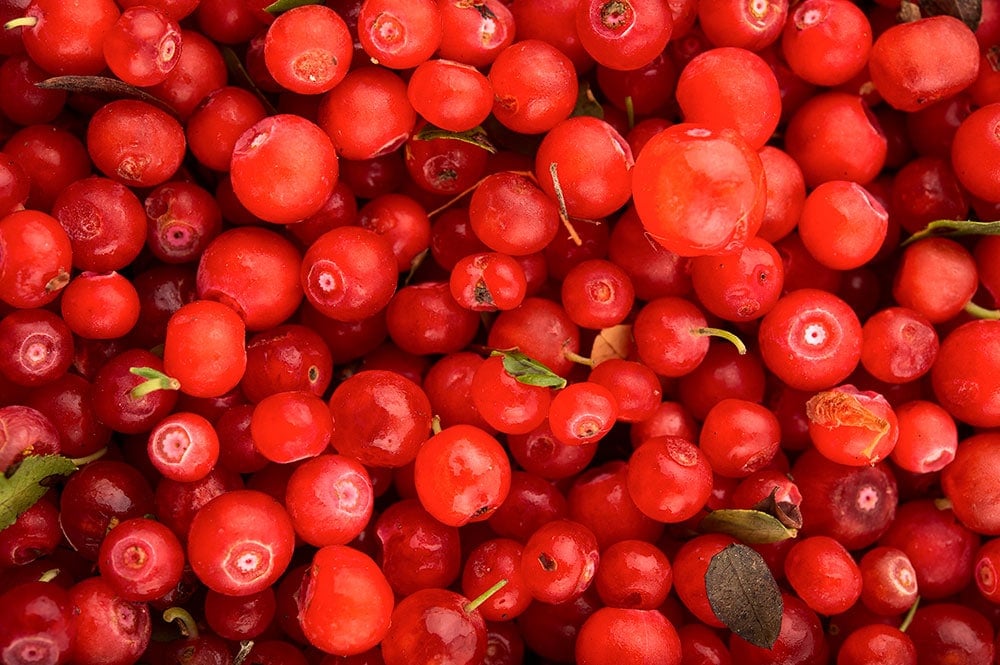
I’ve had an inordinate obsession with the red huckleberry ever since I ate a handful that were sitting on the counter in my friend Langdon Cook’s kitchen some years ago.
Lang is a forager like I am, only he lives in Seattle; the red huckleberry is more common in Washington and Oregon than it is where I live in Northern California. I’d heard of this magical berry before, but had never tasted it. There’s certainly a whiff of blueberry — they are cousins, after all — but red hucks are much tarter, brighter and, well, more interesting than even wild blueberries or the darker, evergreen huckleberries I normally pick.
For years I tried to find them in the Sierra Nevada. Allegedly red huckleberries live there, but they must be pretty rare. Then I looked on our North Coast, and there I found lots and lots of bushes from Sonoma County on north to Oregon. But where I was looking, the berries were few and far between. I’d get a berry here, maybe four there. Frustrating.
Then I got a call from a friend who lives in northern Sonoma County. The red huckleberries were epic this year, he said. Get out here as fast as you can. I was there the next day.
They were everywhere. Red huckleberries like to be in coastal forests, where it’s reasonably wet and there’s lots of fog. The bushes are often growing right out of old redwood stumps, and they can grow to about four feet tall — although they are spindly things. Once you get your eyes on, they’re easy to spot because the their leaves are a lighter shade of green than most everything else around them.
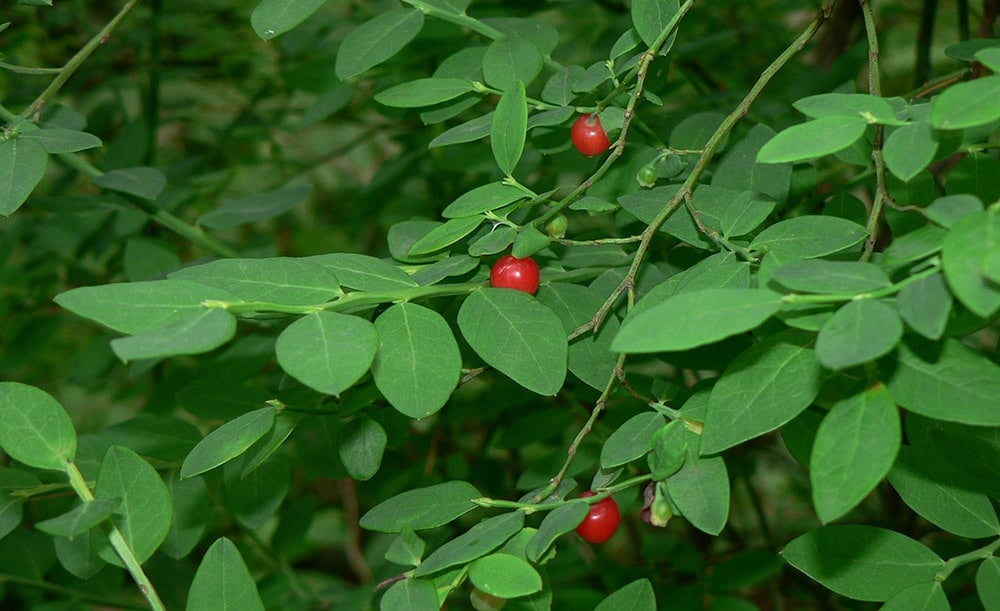
And then there’s the berries. Bright, lurid crimson berries dotting the bushes like Christmas ornaments. You can’t miss them.
If you are worried about identification, memorize the pattern on the blossom end of the berry: Every berry in the vaccinium clan — blueberries, the other huckleberries, bilberries, etc — has this pattern. If it has it, the berry is edible.

Picking season ranges from July through late August and into September at the top of their range, which is southeastern Alaska. I’ve heard they range as far south as Monterey Bay in California, but if you want to lay into red huckleberries, start at Sonoma and go north from there.
The actual picking is… well… persnickety. The berries range from little orbs the size of a capital “O” to the size of a small commercial blueberry. And for the most part you need to pick them one at a time. So be prepared to do some work.

There are lots of way to pick huckleberries, but I prefer to carry containers that are wider than they are tall, which keeps the berries from crushing themselves. It should also have a secure lid, as you will be scrambling through the forest looking for good bushes. The idea of spilling three hours’ work of picking on the forest floor is too tragic to contemplate.
The good news about eating red huckleberries is that a little go a long way.
They are so packed with flavor, and are so sweet-tart that you can get away with using them as a garnish or a small element to another dish. That said, I am pretty sure I could rip through many pounds of these little fruit grenades before I tired of them.
If you find yourself wanting to eat more than you can pick, fortunately you can actually buy red huckleberries online from Northwest Wild Foods.
I don’t need to tell you how to eat your red hucks. They are good in anything, from a bowl with fresh cream to pies, jellies, syrups, conserve, cakes, muffins, ice cream, sorbet… you get the point.
Use red huckleberry in any of these recipes:
- Huckleberry cake
- Huckleberry muffins
- Huckleberry sorbet (use a splash of vodka instead of cassis, or skip it)
- Huckleberry ice cream
To preserve huckleberries, the easiest way is to freeze them. Put the berries in one layer on a plate or sheet pan in the freezer. Then, when the berries have frozen, put them in a freezer bag. This method prevents them from all sticking together.
You can also dehydrate huckleberries. Do this by laying them out on a rack in the sun for a couple days; keep the bugs off them. Or, use a dehydrator set to about 135°F. One trick when dehydrating the berries is to remove the small ones first. Otherwise you’ll get nicely raisined large berries and little red rocks. Check every couple hours.
Pickled red huckleberry is pretty awesome, too. All you need to do is make up a sweet pickle, say a ratio of 2:1:1 vinegar to water to sugar, bring it to a boil and pour it over a jar full of berries. Put the lid on the jar and when it cools, keep in the fridge for months and months.
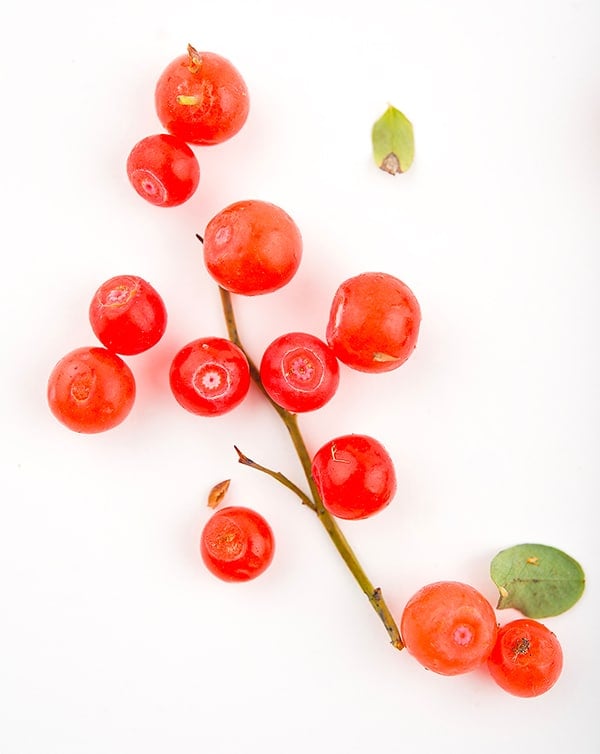
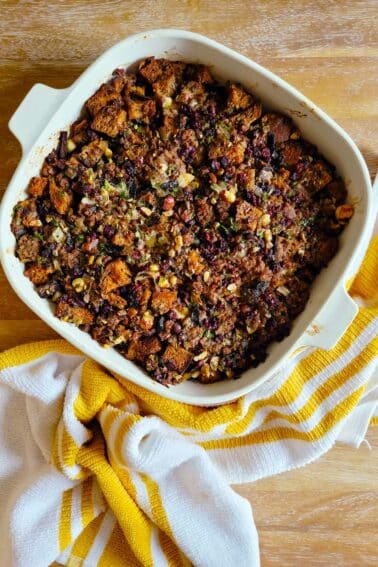
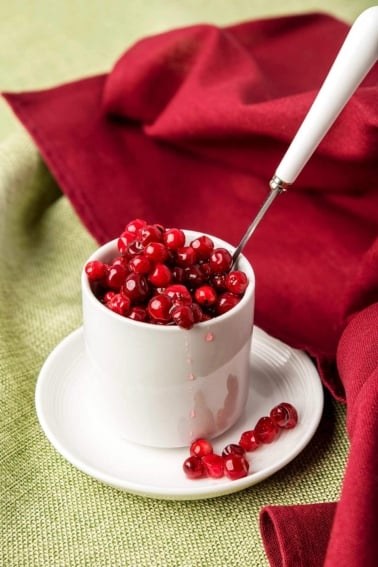
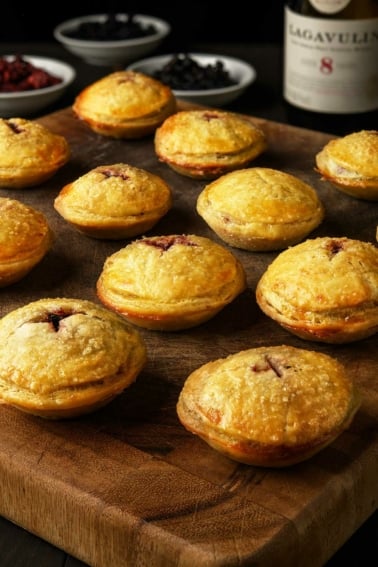

My favorite huckleberry is the so-called Cascade Blueberry, Vaccinium deliciosum, which I get here in Washington. Found above 4000′ or so, the plants are short, sometimes only a few inches tall. But in the right year they can be loaded with complexly flavorful fruit that beats the heck out of red hucks for sure, and also the other two common blue hucks, V. ovalifolium and V. membranaceum. They’re more work to get though, as I only get to my picking locations via a couple of steep trails. Mostly, I turn them into jam but also freeze some for other uses.
PM me if you’d like a jar. I’ve been taking recipes and ideas off your excellent site for so long that I owe you more than that.
Thank you for sharing your wonderful article. I’m intrigued by the pickled berries! Please tell me how you serve, or what you eat them with.
Therese: I like them alongside game meats, especially birds like grouse.
I use an empty gallon of milk jug, cut the mouth off but leave the handle in tact! Slide your belt through the handle and now you’ve got a little pouch in front of you for hands free huckleberry picking.
I have just discovered huckleberries. I bought some from someone up north. However, I am trying to learn forage. How do you even know where to begin? It seems like fight club! No body talks about fight club.
My sister has a small property in Washington. When we go huckleberry picking we take a fitted sheet and 2 clamps. We clip 2 corners near the base of a bush and tuck the others into a belt at the waist, any kind of tie will do. Then we just strip carefully into the sheet. Not damaging the berries or the bush. If you know you are going to pick huckleberries it is best to be prepared. As others have found doing all that work and then to loose it is hard. The sheet makes picking easier, you get more berries in half the time.
A delightful read, Hank. I grew up in the PNW and picked red huckleberries every summer of my youth. My family didn’t have a garden, so to me they were magical, free food – like the himalayan blackberries we have so many of here.
I sympathize with your description of the painstaking work the harvest of these berries is as well as their delightful flavor. Whenever I was getting on my mom’s nerves she would send me out to pick “enough for a pie.” Invariably I came home with a meager handful, the remainder having been gleefully eaten in my hour or two in the woods.
I started harvesting red huckleberries about a month ago, an hour wast of Portland, OR. Some of the bushes i found had very small berries and they were pretty few and far between. This was until i found a pair of bushes that were overloaded, I got about two pints of berries from two plants and that was still about only 50% of the berries on them.
Hank, I found a patch of whitish-pink huckleberries near the Southfork of the Payette River. Their flavor was more intense than the purple vatiety. Have you heard of or found any similar?
Brad: Huh. No, but variations do occur. For example, there are “white” blue elderberries in Southern California.
I fashioned a berry picking bucket from an emptied plastic peanut butter pail. I cut a huge hole in the lid and installed a funnel that I made for it. I’ve dumped too many mostly full buckets of berries. Just having a small hole in the lid of the bucket was too difficult to quickly get the berries into the bucket. So, the funnel helps a lot. The funnel is shallow and wide. An accidental bucket inversion results in far less loss of berries now. Bucket inversions are inevitable whilst clambering through the blueberry thickets of the Appalachian Mtns. The funnel/lid also helps to keep out leaves and other debris.